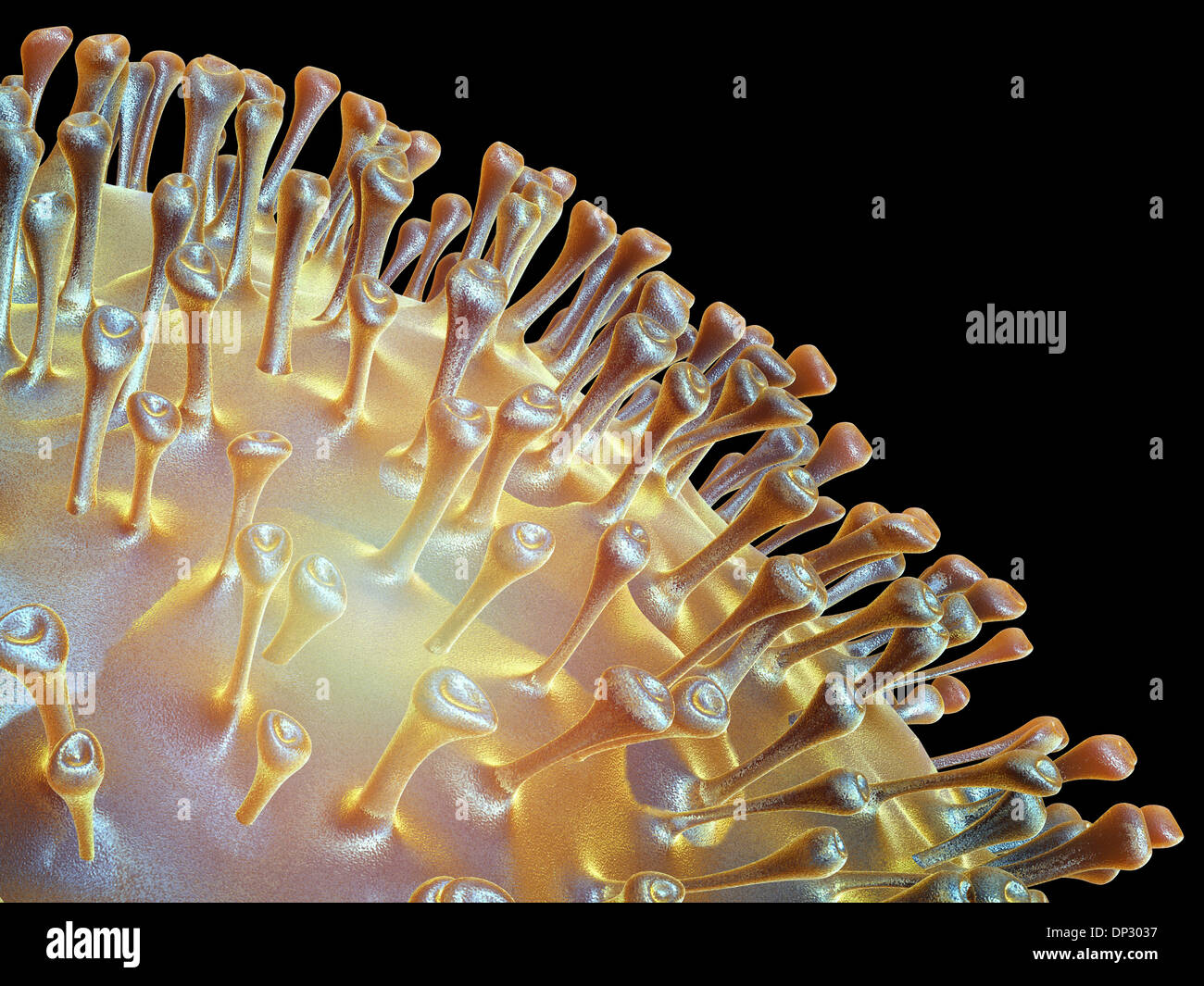Avian influenza virus, artwork

Image details
Contributor:
Science Photo Library / Alamy Stock PhotoImage ID:
DP3037File size:
53.6 MB (4.2 MB Compressed download)Releases:
Model - no | Property - noDo I need a release?Dimensions:
5000 x 3750 px | 42.3 x 31.8 cm | 16.7 x 12.5 inches | 300dpiDate taken:
9 July 2013Photographer:
ALFRED PASIEKA/SCIENCE PHOTO LIBRARYMore information:
Avian flu virus, computer artwork. A virus is a tiny pathogenic particle comprising genetic material enclosed in a protein coat. The coat contains surface proteins (spikes). Flu viruses have two types of surface protein, called haemagglutinin (H) and neuraminidase (N). These exist in several subtypes, some of which are pathogenic in humans, like H5N1 or H7N9.The surface proteins are essential for the life cycle of the virus. Haemagglutinin allows the virus to bind to and enter a host cell, where the virus uses the cell's machinery to create more copies of the virus. Neuraminidase allows the new virus particles to exit the cell, so that they can infect others.